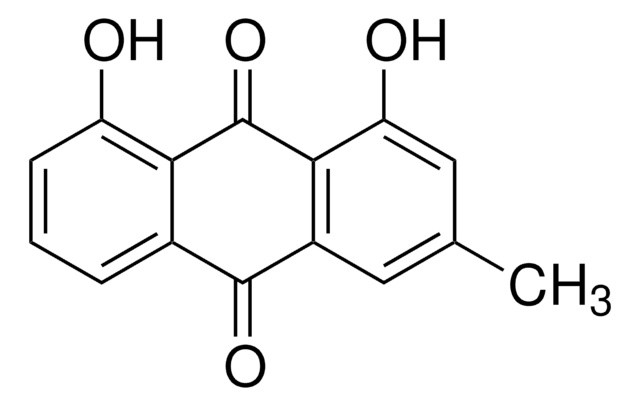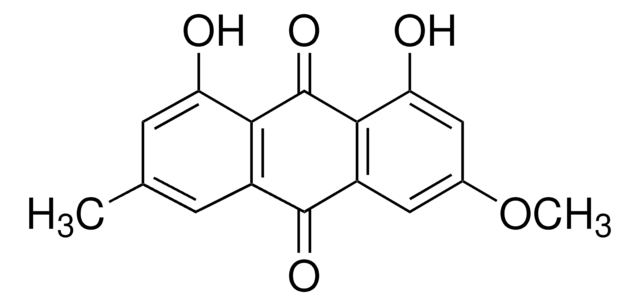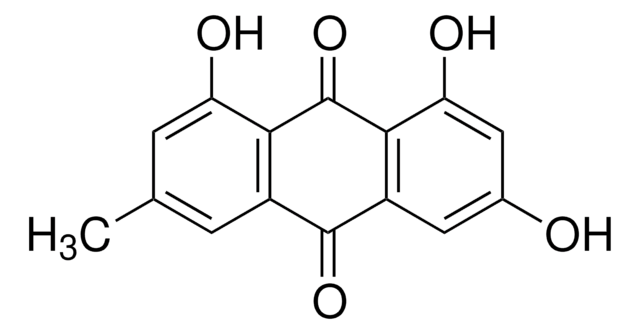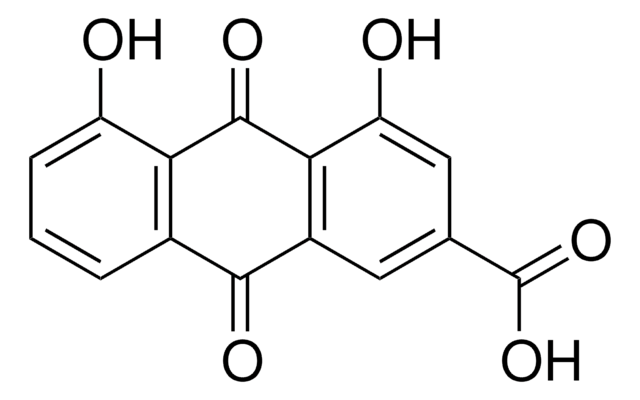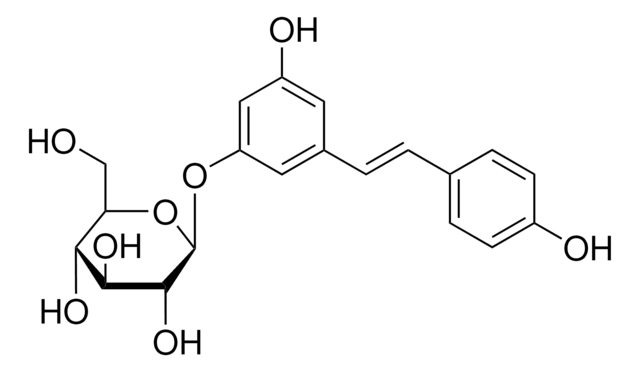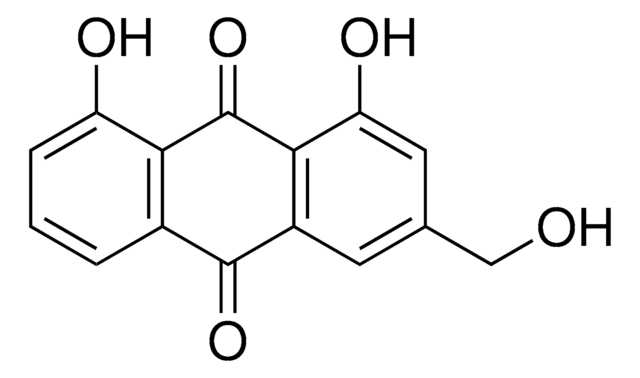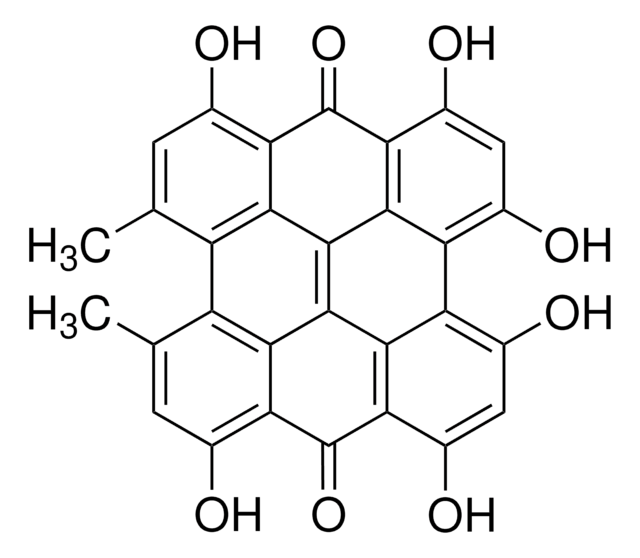93893
Physcion
analytical standard
Sinônimo(s):
1,8-Dihydroxy-3-methoxy-6-methylanthraquinone, 6-O-Methylemodin, 6-Methoxychrysophanic acid, Emodin-3-methyl ether, Parietin, Rheochrysidin
About This Item
Produtos recomendados
grau
analytical standard
Nível de qualidade
Ensaio
≥98.0% (HPLC)
prazo de validade
limited shelf life, expiry date on the label
técnica(s)
HPLC: suitable
gas chromatography (GC): suitable
aplicação(ões)
food and beverages
formato
neat
temperatura de armazenamento
2-8°C
cadeia de caracteres SMILES
COc1cc(O)c2C(=O)c3c(O)cc(C)cc3C(=O)c2c1
InChI
1S/C16H12O5/c1-7-3-9-13(11(17)4-7)16(20)14-10(15(9)19)5-8(21-2)6-12(14)18/h3-6,17-18H,1-2H3
chave InChI
FFWOKTFYGVYKIR-UHFFFAOYSA-N
Procurando produtos similares? Visita Guia de comparação de produtos
Descrição geral
Aplicação
Ações bioquímicas/fisiológicas
Embalagem
Produtos recomendados
Palavra indicadora
Warning
Frases de perigo
Declarações de precaução
Classificações de perigo
Acute Tox. 4 Oral
Código de classe de armazenamento
11 - Combustible Solids
Classe de risco de água (WGK)
WGK 3
Ponto de fulgor (°F)
Not applicable
Ponto de fulgor (°C)
Not applicable
Choose from one of the most recent versions:
Já possui este produto?
Encontre a documentação dos produtos que você adquiriu recentemente na biblioteca de documentos.
Os clientes também visualizaram
Nossa equipe de cientistas tem experiência em todas as áreas de pesquisa, incluindo Life Sciences, ciência de materiais, síntese química, cromatografia, química analítica e muitas outras.
Entre em contato com a assistência técnica